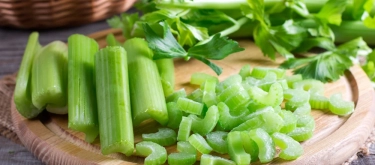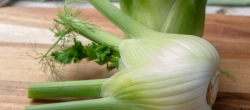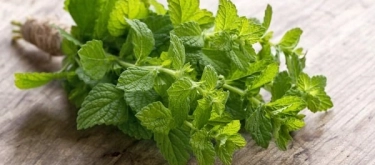Celery: Taste Profile, Aroma, Benefits and Health Risks
Celery is a popular, crunchy vegetable known for its refreshing, slightly bitter flavor and crisp texture. Valued in cuisines around the world for its versatility and nutritional benefits, celery is a key ingredient in salads, soups, and stews, and is often enjoyed as a low-calorie snack. This article provides an in-depth exploration of celery’s sensory attributes, detailed flavor analysis, culinary applications, nutritional benefits, and practical tips for selecting and storing this refreshing vegetable. Additionally, it includes guidance on how best to enjoy celery and highlights potential drawbacks.
What does Celery taste like?

Taste, Aroma, Texture, and Visual Appearance
Taste:
Celery offers a distinctive, mildly bitter flavor with a clean, herbaceous quality.
- Flavor Description: When you bite into celery, you experience a crisp, refreshing taste with a subtle bitterness and a hint of natural saltiness that awakens the palate.
Aroma:
The aroma of celery is fresh and green, evoking a garden-like quality.
- Aromatic Description: It carries a light, grassy scent with hints of earth and a slight peppery undertone, adding to its overall refreshing character.
Texture:
Texture is one of celery’s most defining features.
- Texture Description: Celery is known for its satisfying crunch and high water content, which delivers a crisp, juicy bite that is both hydrating and invigorating.
Visual Appearance:
Celery is visually appealing and easily recognizable.
- Visual Description: It typically features long, pale green stalks with darker green, feathery leaves. The clean, fibrous structure and bright color make celery an attractive addition to salads and vegetable platters.
In-depth Flavor Analysis of Celery
Celery’s flavor profile is shaped by its natural compounds and high water content:
- Balanced Bitterness and Freshness:
The inherent bitterness of celery is tempered by a refreshing, slightly salty taste that enhances its natural crispness. - Herbaceous and Earthy Nuances:
Celery contains volatile compounds that contribute to its signature grassy, herbaceous flavor, with subtle earthy undertones that evolve with each bite. - Temperature Influence:
Chilled celery tends to have a crisper, more pronounced flavor, while room temperature celery may offer a softer, slightly muted taste. - Synergistic Effects:
When used in combination with other ingredients, celery’s mild bitterness and refreshing profile serve to balance flavors and elevate overall taste in complex dishes.
Culinary Applications of Celery
- Primary Uses:
Celery’s versatility makes it a staple in a wide range of recipes. - Popular Applications:
- Raw Consumption: Enjoy celery sticks on their own or with dips as a crunchy, low-calorie snack.
- Salads: Chop celery into salads for added texture, flavor, and a refreshing contrast to other greens.
- Soups and Stews: Use celery as a base ingredient in soups, stews, and broths to impart its aromatic, herbaceous flavor.
- Juices and Smoothies: Blend celery into green juices or smoothies for a nutrient-rich, hydrating boost.
- Garnishes and Fillers: Finely chop celery to use as a garnish on various dishes or as a filling in wraps and sandwiches.
- Ideal Pairings:
Celery pairs well with citrus, apple, peanut butter, and cheeses, and it complements robust flavors in meat-based dishes and delicate greens in salads.
Selection and Storage of Celery
- Selecting Celery:
Choose celery with firm, bright green stalks and crisp, vibrant leaves. Avoid stalks that appear wilted, discolored, or overly fibrous. - Storage Recommendations:
Store celery in the refrigerator, ideally in a perforated plastic bag or container to maintain its freshness. Keep it in the vegetable crisper to prolong its crisp texture and flavor. For best quality, use within a week of purchase.

Quick Facts About Celery
- Global Staple:
Celery is a common vegetable used in salads, soups, and as a crunchy snack worldwide. - Nutrient-Dense:
Rich in vitamins A, C, and K, as well as folate and potassium, celery supports overall health. - Low-Calorie:
With very few calories, celery is ideal for weight management. - Hydrating:
Its high water content makes it both refreshing and beneficial for hydration. - Versatile:
Used in both raw and cooked forms, celery adapts to a wide range of culinary applications. - Cultural Importance:
Integral to classic dishes in Mediterranean, American, and Asian cuisines. - Dietary Fiber:
Provides dietary fiber that aids in digestion and promotes satiety. - Sustainable:
A readily available and affordable vegetable that supports healthy eating habits.
Benefits of Celery
- Supports Hydration:
Its high water content helps maintain proper hydration levels. - Aids Digestion:
Rich in dietary fiber, celery promotes healthy digestion and regular bowel movements. - Low-Calorie Nutrition:
Ideal for weight management due to its low caloric density. - Heart Health:
Contains potassium, which is essential for maintaining healthy blood pressure levels. - Anti-inflammatory Properties:
The natural compounds in celery may help reduce inflammation. - Antioxidant Benefits:
Provides antioxidants that support overall health and protect against oxidative stress. - Nutrient-Rich:
Delivers essential vitamins and minerals that contribute to immune function and overall well-being. - Versatile Culinary Use:
Enhances both the flavor and texture of a wide array of dishes.
Additional Nutritional Insights and Unique Varietal Details
- Core Composition:
Celery is composed primarily of water and dietary fiber, with essential vitamins and minerals that support health. - Caloric Content:
Approximately 14–16 calories per 100 grams, making it an extremely low-calorie food. - Micronutrient Profile:
Provides vitamins A, C, and K, as well as folate and potassium, which are crucial for maintaining cellular health and blood pressure. - Dietary Fiber:
The fiber in celery aids in digestion and contributes to a feeling of fullness. - Varietal Differences:
Different cultivars of celery can vary in flavor intensity, crunchiness, and overall appearance, from crunchy stalks to more tender, leafy varieties. - Processing Impact:
Fresh, raw celery retains maximum nutritional value, while cooking may soften its fiber but can also concentrate its flavor. - Scientific Studies:
Research suggests that regular consumption of celery may support cardiovascular health and reduce inflammation. - Culinary Innovation:
Modern chefs incorporate celery into a variety of creative dishes, such as cold soups, fresh slaws, and innovative vegetable juices, highlighting its versatility.
How to Eat Celery
- Raw in Salads:
Chop celery into bite-sized pieces and toss it into salads for a crisp, refreshing texture. - As a Snack:
Enjoy celery sticks with dips like hummus, peanut butter, or yogurt for a low-calorie, crunchy snack. - Juiced or Blended:
Include celery in green juices or smoothies to boost hydration and add a subtle, savory note. - Cooked in Soups:
Sauté or simmer celery in soups and stews to enhance flavor and provide a robust base. - Stir-Fries and Wraps:
Use celery as a crunchy element in stir-fries or wraps to add texture and freshness. - Garnish:
Finely chop celery leaves and stalks as a garnish to add color and a hint of spice to various dishes.
Harm (Potential Negative Effects) of Celery
- Digestive Discomfort:
Overconsumption of celery, due to its high fiber content, may cause bloating or gas in some individuals. - Allergic Reactions:
Although rare, some people may experience allergic reactions to celery, such as itching or swelling. - Pesticide Residues:
Conventionally grown celery may contain pesticide residues; thorough washing or choosing organic celery is advisable. - Oxalate Content:
Celery contains moderate levels of oxalates, which could pose a risk for kidney stone formation in susceptible individuals. - Sodium Consideration:
Celery naturally contains a small amount of sodium, which may need to be considered for individuals on a low-sodium diet. - Taste Sensitivity:
Its strong, distinctive flavor might not appeal to everyone, particularly those with a preference for milder greens. - Potential Interaction with Medications:
In rare cases, the natural compounds in celery may interact with certain medications, so consult a healthcare provider if needed. - Nutritional Imbalance:
Relying solely on celery for leafy greens may lead to nutritional deficiencies, so it should be part of a diverse diet.
Conclusion
Celery is a refreshing, nutrient-dense vegetable that provides a satisfying crunch and a distinctive, slightly bitter flavor that enhances a variety of dishes. Its high water and fiber content support hydration and digestive health, making it an excellent addition to salads, soups, and snacks. Although its flavor is robust and may not suit every palate, celery’s versatility and health benefits ensure its continued popularity in both traditional and innovative culinary applications. Balance celery with other nutrient-rich vegetables to enjoy its benefits while maintaining a diverse, healthy diet.
References
- Johnson, L. & Carter, M. (2018). Leafy Greens and Their Nutritional Benefits. New York: Green Press.
- Smith, J. (2019). "Comparative Analysis of Fresh Vegetables: Celery and Other Crunchy Greens." Journal of Nutrition Research, 15(2), 45–52.
- Garcia, P. (2020). The Global Guide to Vegetables. London: Culinary Press.
- Brown, A. & Lee, S. (2020). "Fiber and Micronutrient Profiles in Common Salad Greens." International Journal of Food Science, 12(1), 112–119.
- Martinez, R. (2019). Vegetable Vitality: Nutritional and Culinary Perspectives. Singapore: Healthy Living Publications.
- Kim, S. (2020). "Antioxidant Properties in Fresh Vegetables: A Focus on Celery." Food Chemistry Research, 15(3), 89–97.
- Anderson, D. & Gupta, R. (2021). The Encyclopedia of Vegetables. Los Angeles: Global Veg Press.
- Wong, A. (2018). "Modern Trends in Salad Preparation: The Role of Celery." Journal of Culinary Studies, 11(4), 123–130.











